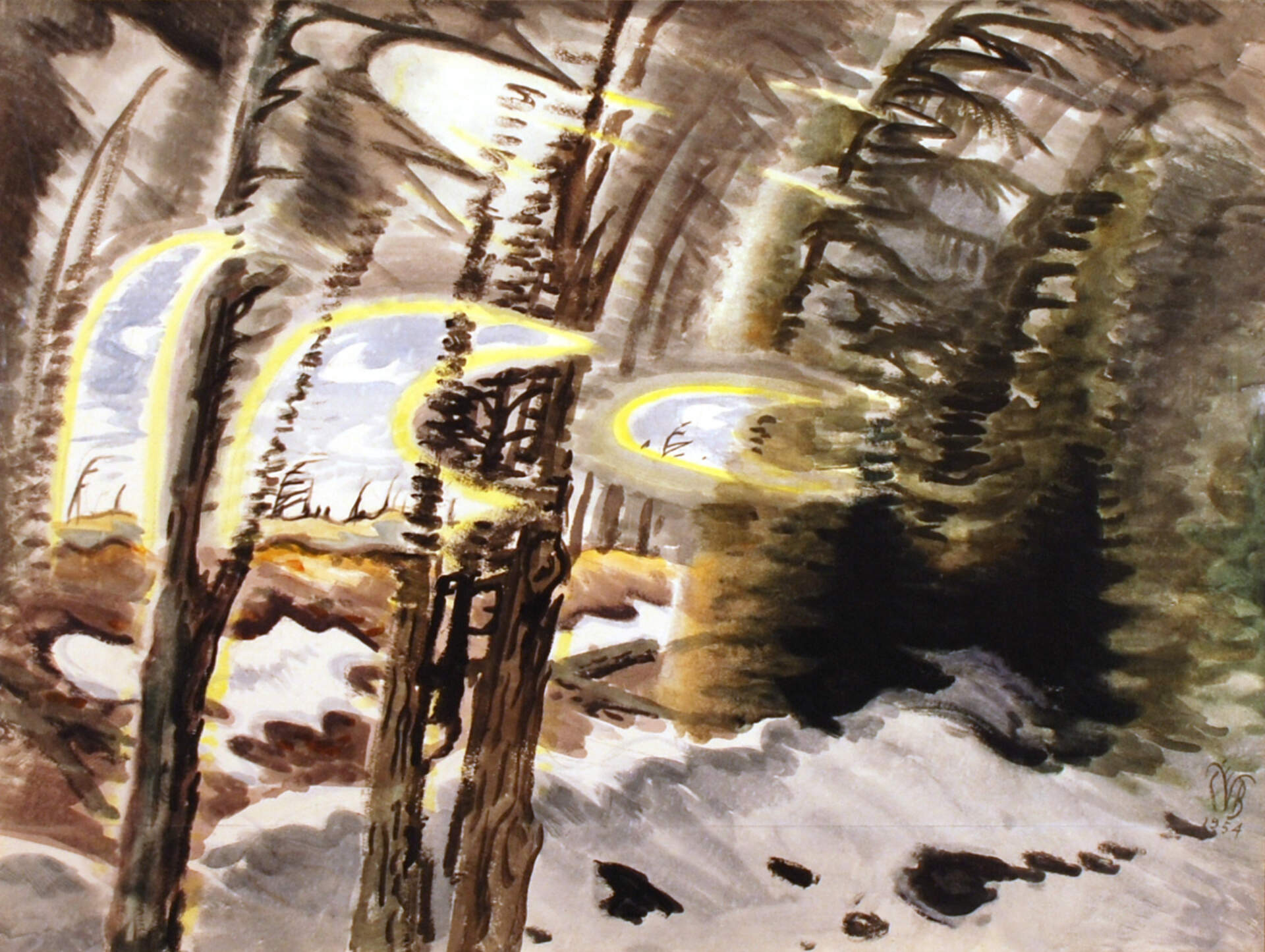Charles E. Burchfield (1893-1967)Oncoming Spring
1954
watercolor on paper mounted on board
29 1/2 x 39 5/8 inches
Burchfield Penney Art Center, Purchased in part with support from the Western New York Foundation and the Olmsted Family in Memory of Harold L. Olmsted, 1990
Believing in the authenticity of experience to create the most effective artwork, Charles E. Burchfield enjoyed “the thrill of being right in the midst of the storm,” when he painted Oncoming Spring in 1954. Rain and snow were forecast, so he knew what he wanted to accomplish when he left his home for the “Big Woods,” one of his favorite places at the west end of Zoar Valley near Gowanda, New York. Besides the fury of the wind, he wanted to show the fickleness of changing, yet simultaneous seasons: “My theme was the clashing of spring and winter in the woods, sunlight and wind penetrating the deep gloom of winter." He had been plotting the idea for five or six years. In 1955 Charles Burchfield wrote to Mrs. Harold Olmsted, who with her husband had acquired Oncoming Spring, about how the painting had been conceived:
The idea of expressing the transition of the seasons is one that has occupied me all my life. As far back as 1915 when I was still in Art School, inspired by Chinese scroll paintings, I made many studies of the transition of weather as well as seasons, day to night and vice versa, etc, to be executed much in the manner of the scrolls. Curiously enough none of these were ever carried out—and following the rapid changes we make when young, I soon turned to other ideas and making pictures in the conventional shapes (if not conventional subject matter!)
Recently the idea of transition again cropped up in my mind, only now it was more mature. I conceived the notion of encompassing two wholly dissimilar themes in one picture—to reduce each of them to abstract motifs (albeit based on natural forms and experiences) and show them interlocking or striving for the mastery. It was an idea not easy to arrive at, and there was a period of five or six years between the first pencil note and the finished picture which you now own. I did not even choose the time when it should happen. External conditions had to be right of course, and the idea had to be completely germinated in my mind, ready to burst forth— You may recall last year at the end of March, the big snowstorm we had, and then the glorious thaw that followed— At nearly the end of it I went out painting to a woods on the Gowanda‑Zoar Valley Rd. which I call the Big Woods (where I have painted most of my wood interiors). All at once everything seemed to crystallize, and I said “I'm going to paint the ‘Winter to Spring Transition’ today.” Hardly had I set up my easel when a thunderstorm came up. I decided nothing was going to stop my painting, and hurriedly got my huge beach umbrella, & my rain‑coat. I protected my legs with a portfolio (the wind holding it in place). And so I painted with my nose almost on the paper with thunder crashing, boughs breaking and rain falling in torrents— A glorious few hours when I seemed to become part of the elements. When I was done at late afternoon, the picture was complete— It seemed as if it has materialized under its own power—
— Nancy Weekly
